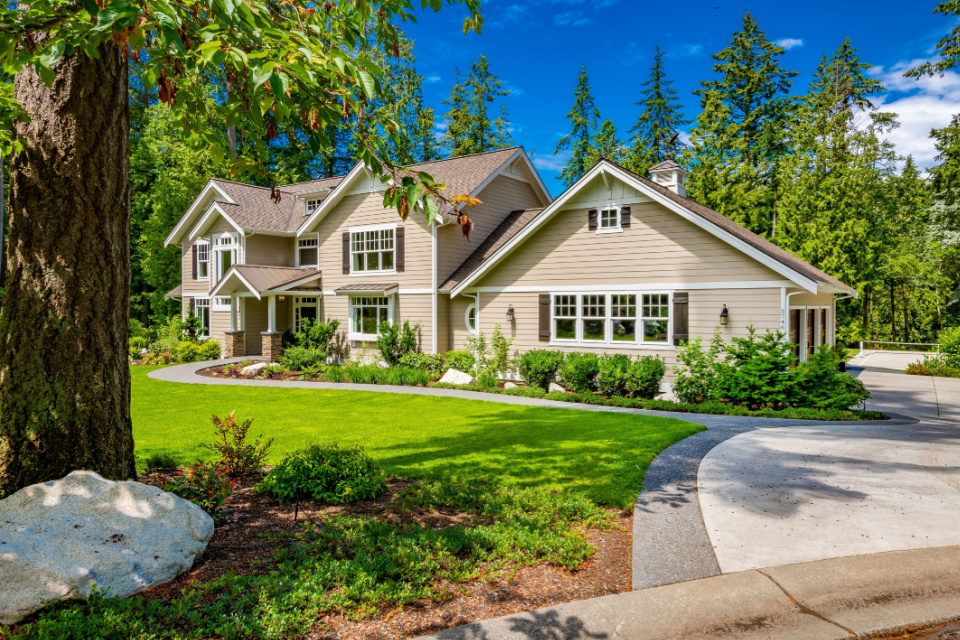
The popular design style that has stood the test of time
04/08/2023
Sustainable Housing Designs
04/08/2023Sustainable houses are becoming increasingly popular as people recognize the importance of minimizing environmental impact while maximizing efficiency and the use of renewable resources. Such houses are designed to be sustainable and responsible in their use of materials, energy, and water, while providing a healthy living environment for the residents. Sustainable houses are designed to minimize their impact on the environment and maximize their efficiency and use of renewable resources. Here are some features of sustainable houses:
- Energy Efficiency:
Sustainable houses are designed to use less energy by using efficient appliances, using insulation to keep heat in during the winter and out during the summer, and using windows and doors that are designed to minimize heat loss. By reducing energy usage, sustainable houses can help to lower the carbon footprint associated with traditional housing options. Additionally, sustainable houses can be constructed with “passive design” principles in mind. Sustainable housing provides a range of benefits that extend beyond environmental considerations. These benefits include improved indoor air quality, reduced utility bills for residents (due to the use of renewable energy sources and efficient appliances), and potentially increased property values for homeowners due to the desirable nature of sustainable housing in today’s real estate market. It’s clear that sustainable housing offers a viable alternative to traditional energy-guzzling homes by reducing carbon emissions and the strain on natural resources while providing numerousbenefits for both the environment and residents.
- Passive Design:
Sustainable houses are designed to make use of natural light, ventilation, and heating to reduce the need for artificial lighting, air conditioning, and heating. This design approach is called passive design, and it involves orienting the house to take advantage of natural light and heat while also incorporating features like shading devices such as overhangs or louvers that can block direct sunlight during the summer months and allow it to enter the house during the winter months. Additionally, sustainable houses may also use materials that have high thermal mass to absorb and store heat during the day and release it slowly at night. Passive design reduces the need for artificial lighting, heating and air conditioning by maximizing the use of natural resources. This not only reduces the environmental impact of a home but also results in lower utility bills for homeowners. In addition, sustainable houses often utilize renewable energy sources such as solar panels or wind turbines to power their homes.
- Renewable Energy:
Sustainable houses often incorporate renewable energy sources like solar panels, wind turbines, and geothermal systems to generate electricity and heat. These sources of energy are inexhaustible and provide a clean alternative to the fossil fuels that power traditional homes. In addition, sustainable housing may utilize battery storage systems to store energy generated from renewable sources for use during times when the sun is not shining or the wind is not blowing. Furthermore, sustainable houses can be connected to a grid that allows homeowners to sell any excess energy they generate back to the utility company for others to use. This “net metering” system effectively allows homeowners to make money from their renewable energy investments while also contributing to a more sustainable energy grid overall. As we move towards a more sustainable future, it is important to recognize the benefits of sustainable housing and prioritize its implementation.
- Sustainable Materials:
Sustainable housing can also be constructed using eco-friendly and sustainable materials. These materials may include sustainable wood or bamboo, recycled steel and glass, as well as non-toxic paints, adhesives and insulations. Using these materials can significantly reduce the environmental impact of construction while also providing a healthier living environment for residents. Furthermore, using sustainable materials can also reduce maintenance costs and increase the durability of the house. Overall, sustainable housing is not only an environmentally conscious choice but also a practical one that provides long-term benefits to homeowners in terms of reduced energy costs and increased durability and ease of maintenance.
- WaterConservation:
Water conservation is another critical aspect of sustainable housing. Sustainable houses use innovative technologies and design techniques to minimize water consumption while maximizing the efficiency of water usage. For example, sustainable houses may incorporate rainwater harvesting systems to collect and store rainwater for outdoor use or greywater recycling systems that filter and treat water from sinks, showers and washing machines for reuse in toilet flushing or irrigation. Additionally, sustainable houses may also use low-flow fixtures and appliances to reduce water usage. These water conservation practices not only help to reduce the strain on local water resources but also result in lower utility bills for homeowners.
In conclusion, sustainable housing offers numerous advantages for both homeowners and the environment. By incorporating these features into the design of a house, homeowners can reduce their environmental impact and create a healthier, more sustainable living space. From reduced energy costs and increased durability to improved environmental sustainability, sustainable housing plays a critical role in creating a more sustainable future for our planet.



